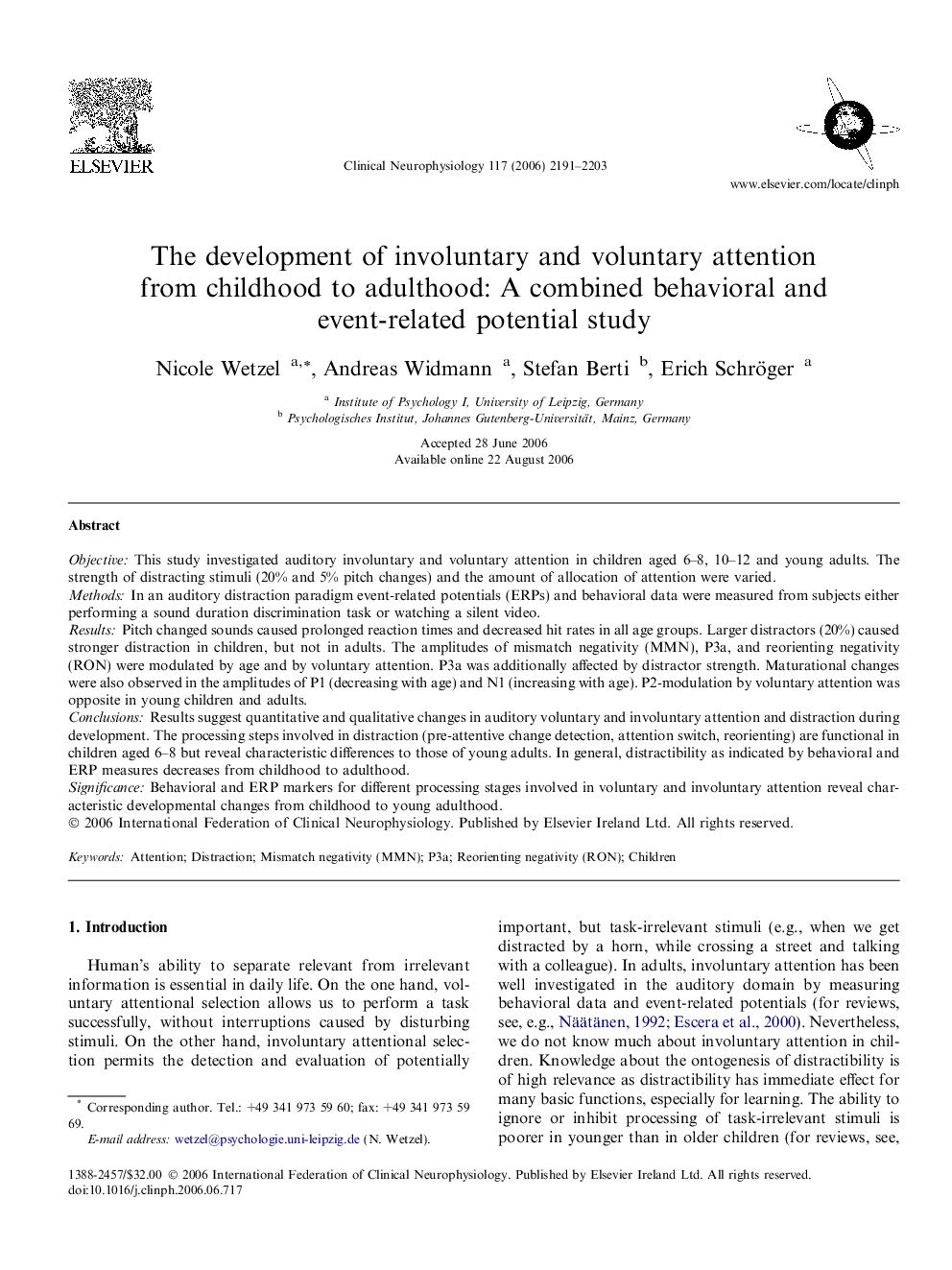| Article ID | Journal | Published Year | Pages | File Type |
|---|---|---|---|---|
| 3047667 | Clinical Neurophysiology | 2006 | 13 Pages |
ObjectiveThis study investigated auditory involuntary and voluntary attention in children aged 6–8, 10–12 and young adults. The strength of distracting stimuli (20% and 5% pitch changes) and the amount of allocation of attention were varied.MethodsIn an auditory distraction paradigm event-related potentials (ERPs) and behavioral data were measured from subjects either performing a sound duration discrimination task or watching a silent video.ResultsPitch changed sounds caused prolonged reaction times and decreased hit rates in all age groups. Larger distractors (20%) caused stronger distraction in children, but not in adults. The amplitudes of mismatch negativity (MMN), P3a, and reorienting negativity (RON) were modulated by age and by voluntary attention. P3a was additionally affected by distractor strength. Maturational changes were also observed in the amplitudes of P1 (decreasing with age) and N1 (increasing with age). P2-modulation by voluntary attention was opposite in young children and adults.ConclusionsResults suggest quantitative and qualitative changes in auditory voluntary and involuntary attention and distraction during development. The processing steps involved in distraction (pre-attentive change detection, attention switch, reorienting) are functional in children aged 6–8 but reveal characteristic differences to those of young adults. In general, distractibility as indicated by behavioral and ERP measures decreases from childhood to adulthood.SignificanceBehavioral and ERP markers for different processing stages involved in voluntary and involuntary attention reveal characteristic developmental changes from childhood to young adulthood.
